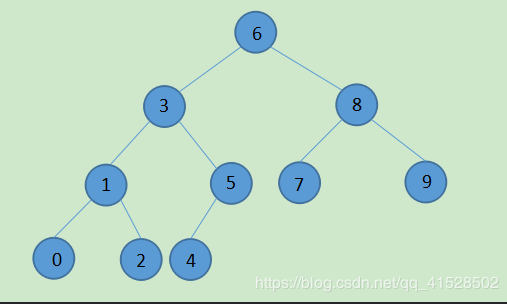
解题思路:
1、利用排序树中序遍历非递减的性质,将输入数据升序排序
2、利用完全二叉树的性质,求左子树的个数,从而确定根结点所在位置,递归确定左右子树根结点,建立二叉搜索树
3、层序遍历输出

#include <stdio.h> #include <math.h> #include <malloc.h> #define ElemType int typedef struct TNode { ElemType Data; struct TNode *Left,*Right; }*BiTree; int cmp(int *a,int *b) { return *a-*b; } int FindRoot(int a[],int low,int high) { int count; if(low==high) { count=0; } else { int len=high+1-low; int h=log(len)/log(2); int leftnum=len-pow(2,h)+1; if(leftnum>pow(2,h)/2) leftnum=pow(2,h)/2; count=(pow(2,h)-2)/2+leftnum; } return count; } BiTree BuildTree(int a[],int low,int high) { int pos=low+FindRoot(a,low,high); BiTree T=(BiTree)malloc(sizeof(BiTree)); T->Data=a[pos]; int llen=pos-low; int rlen=high-pos; if(llen) { T->Left=BuildTree(a,low,pos-1); } else T->Left=NULL; if(rlen) { T->Right=BuildTree(a,pos+1,high); } else T->Right=NULL; return T; } int flag=0; void Out(BiTree T) { BiTree Q[100]; int front=0,rear=0; Q[front++]=T; while(rear<front) { BiTree p=Q[rear++]; if(flag) printf(" "); else flag=1; printf("%d",p->Data); if(p->Left) Q[front++]=p->Left; if(p->Right) Q[front++]=p->Right; } } int main() { int n; scanf("%d",&n); int i; int a[n]; for(i=0; i<n; i++) { scanf("%d",&a[i]); } qsort(a,n,sizeof(int),cmp); BiTree T=BuildTree(a,0,n-1); Out(T); }